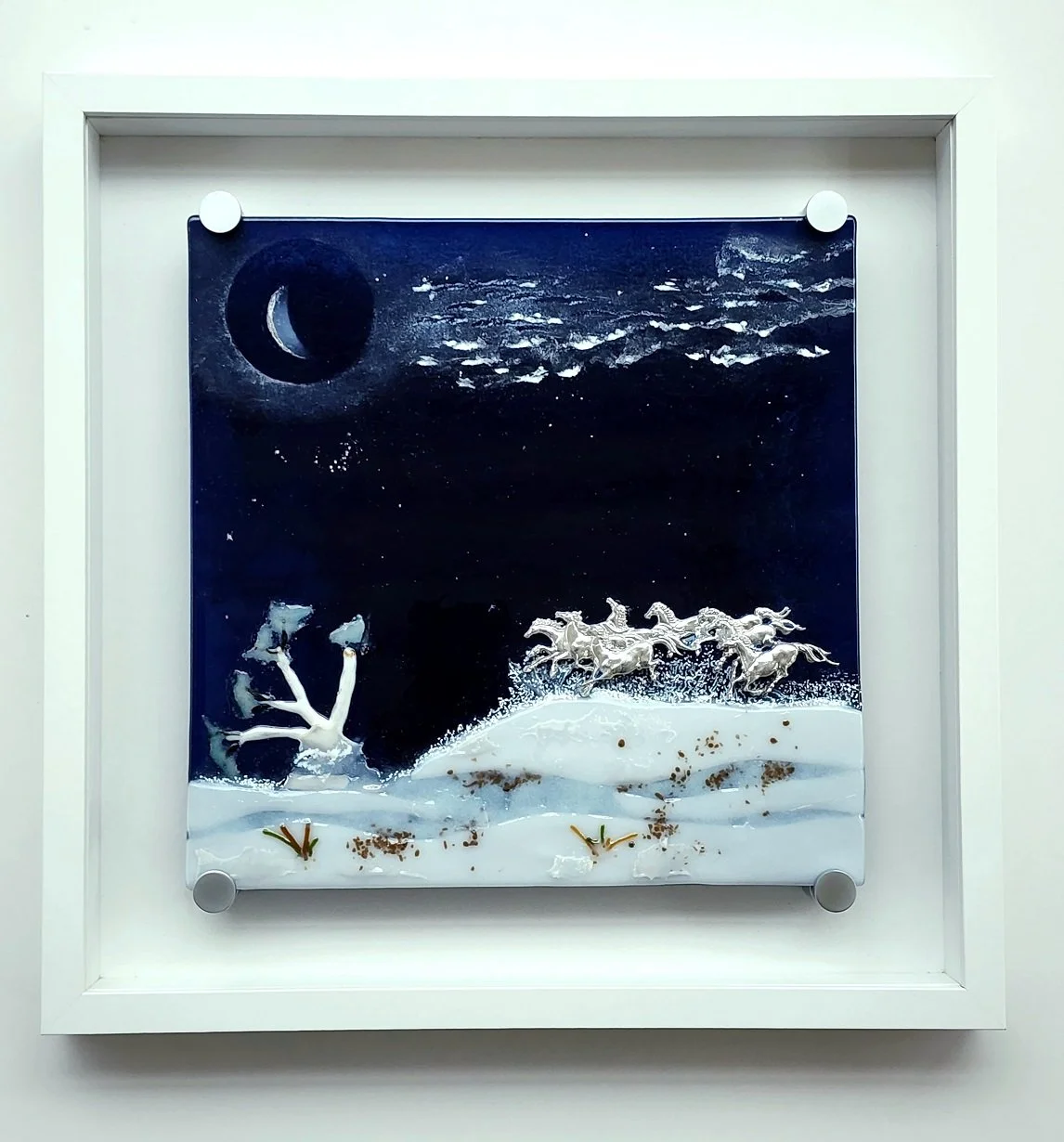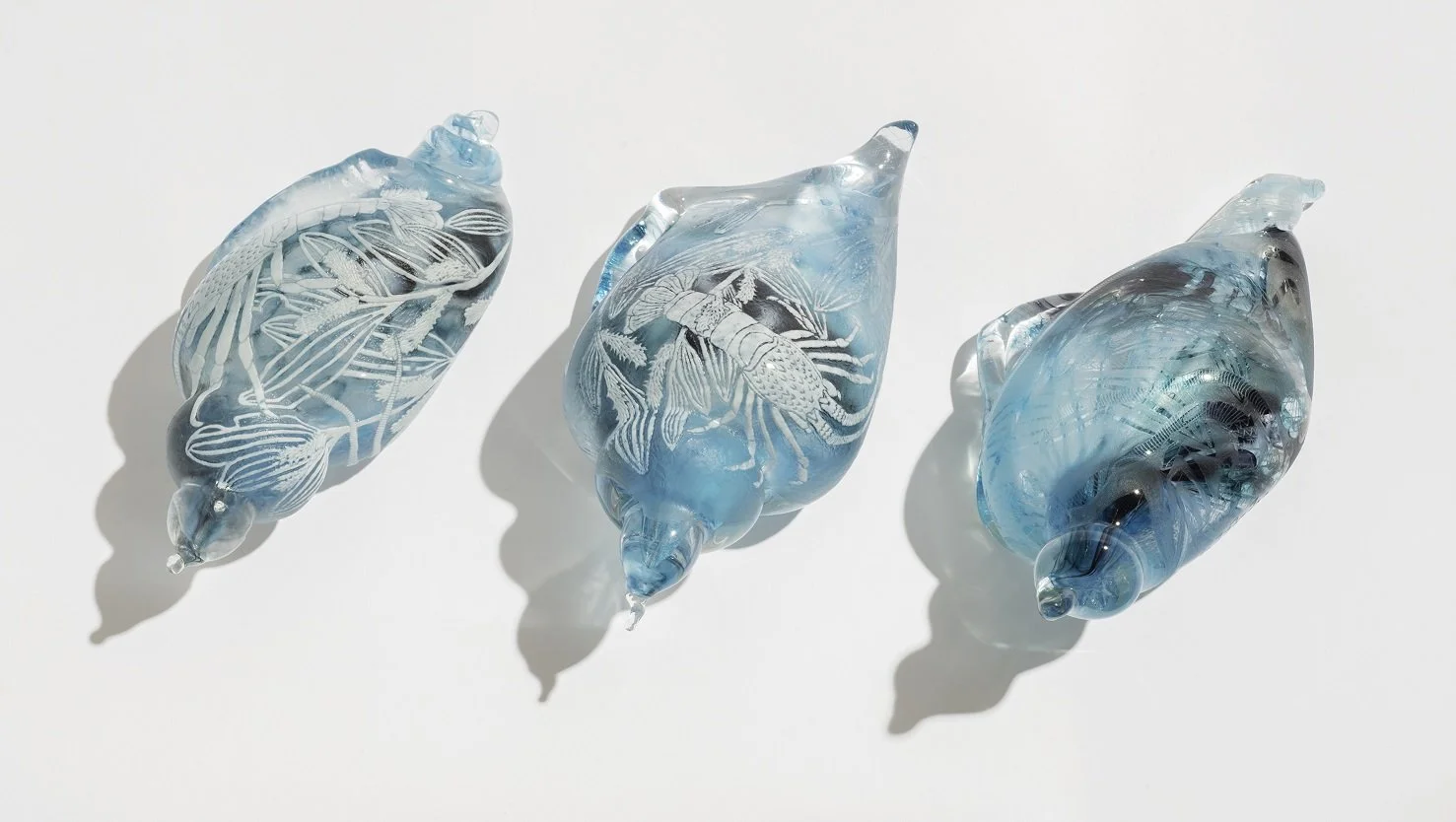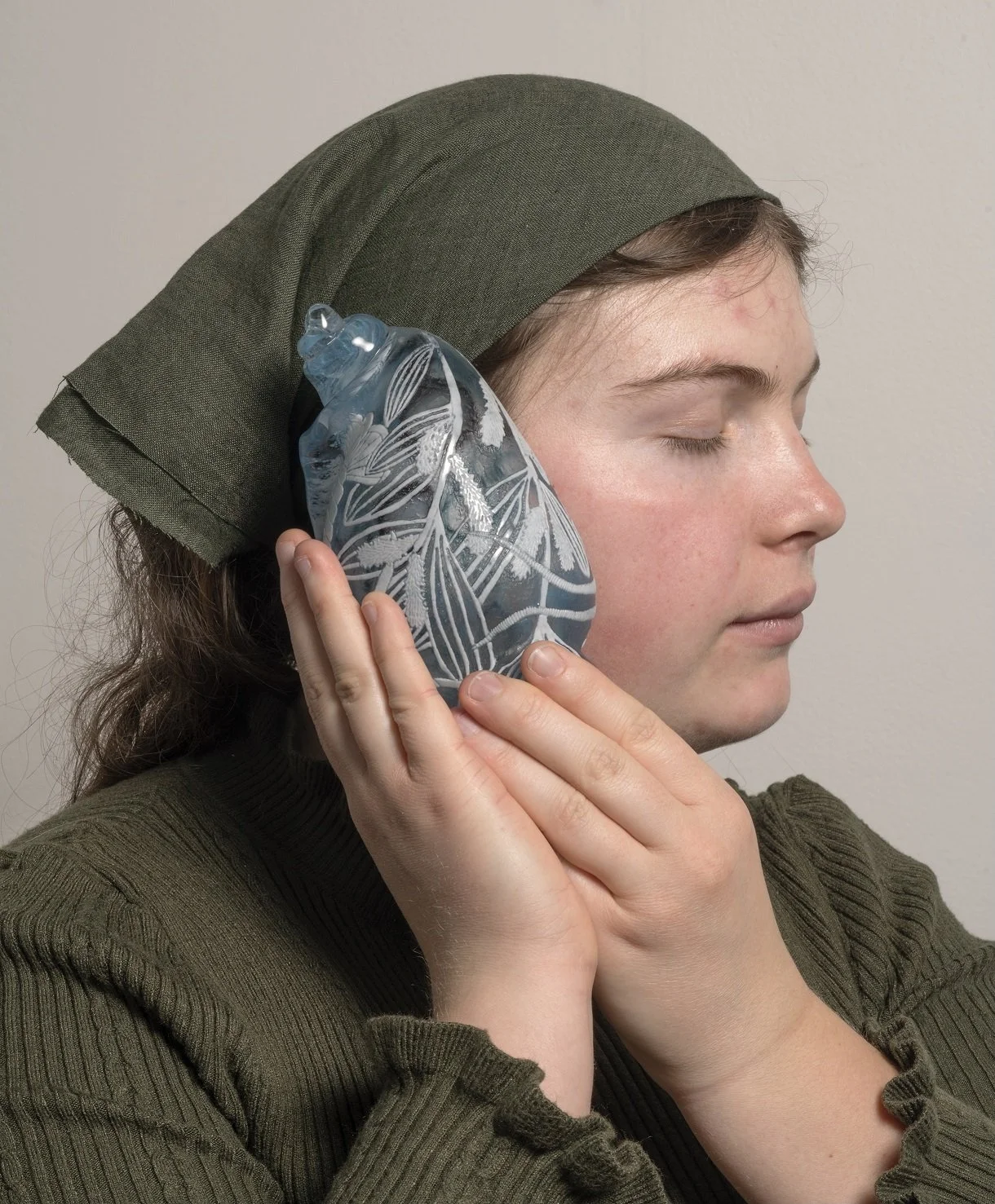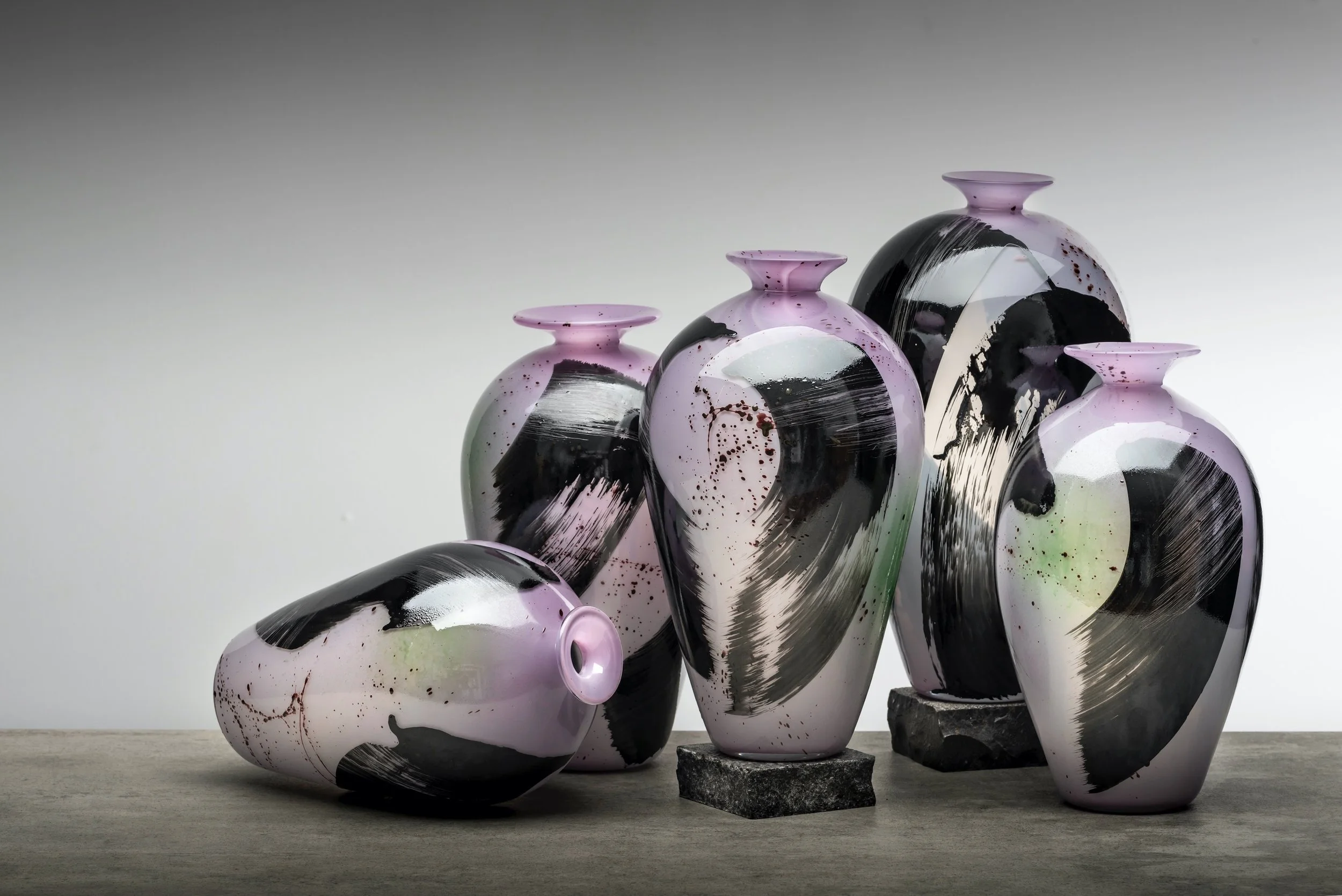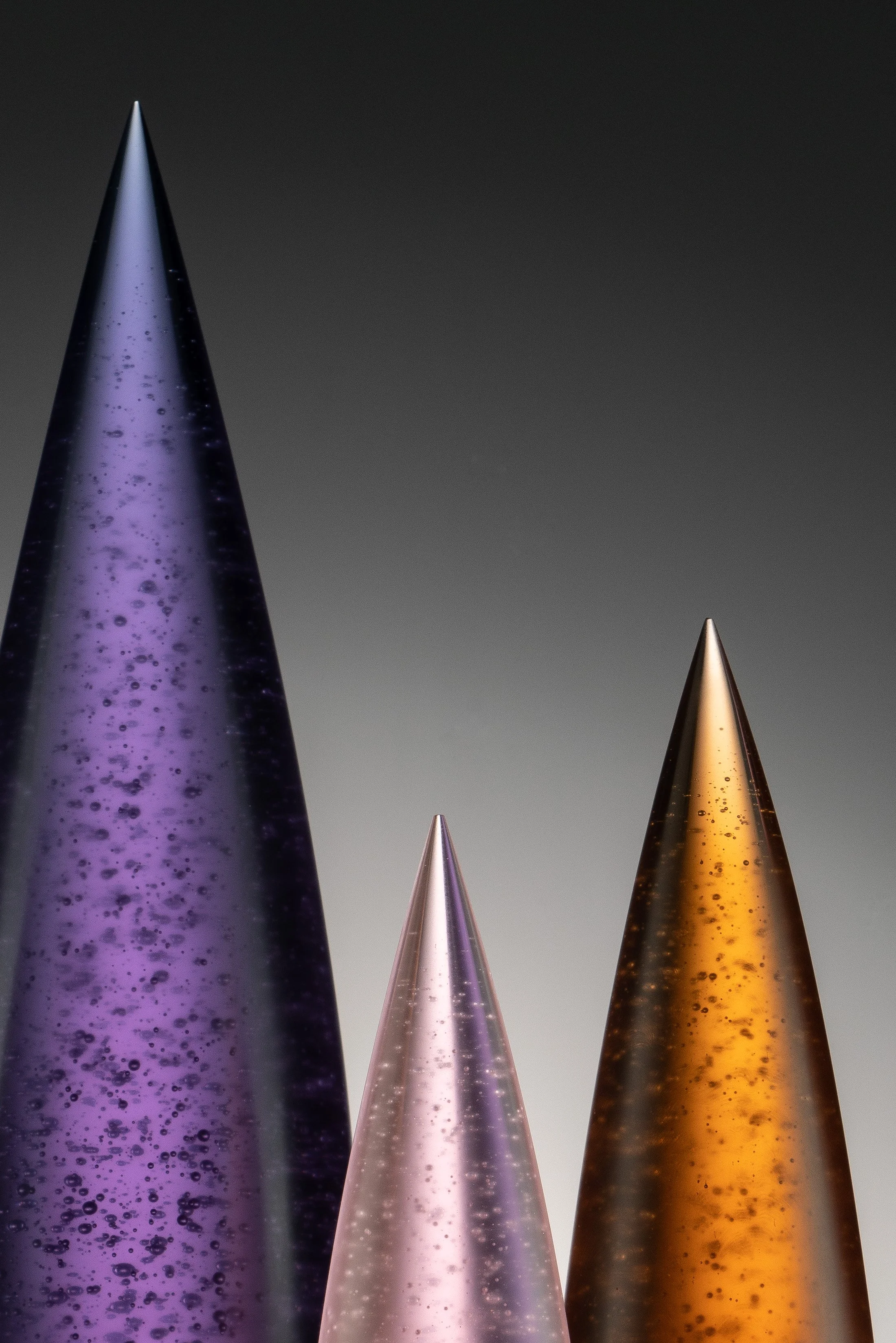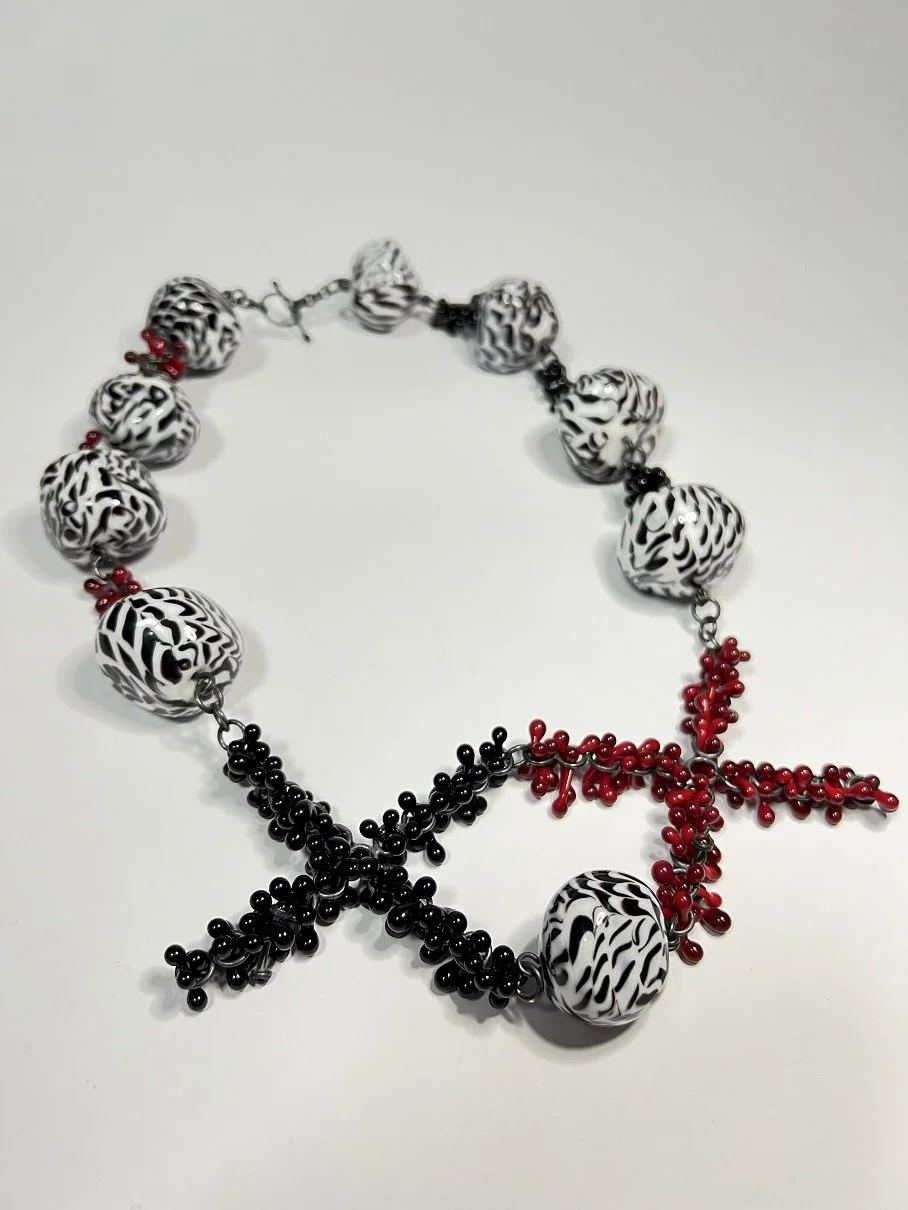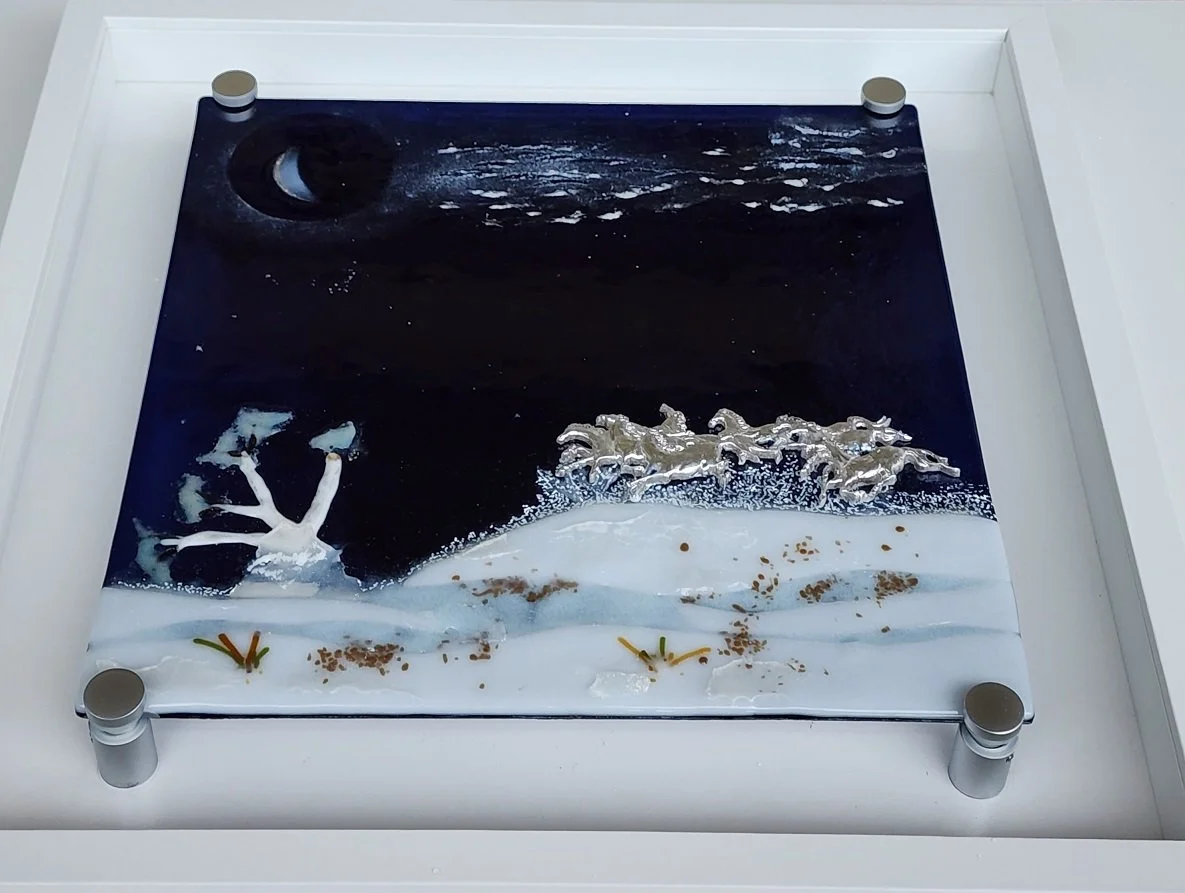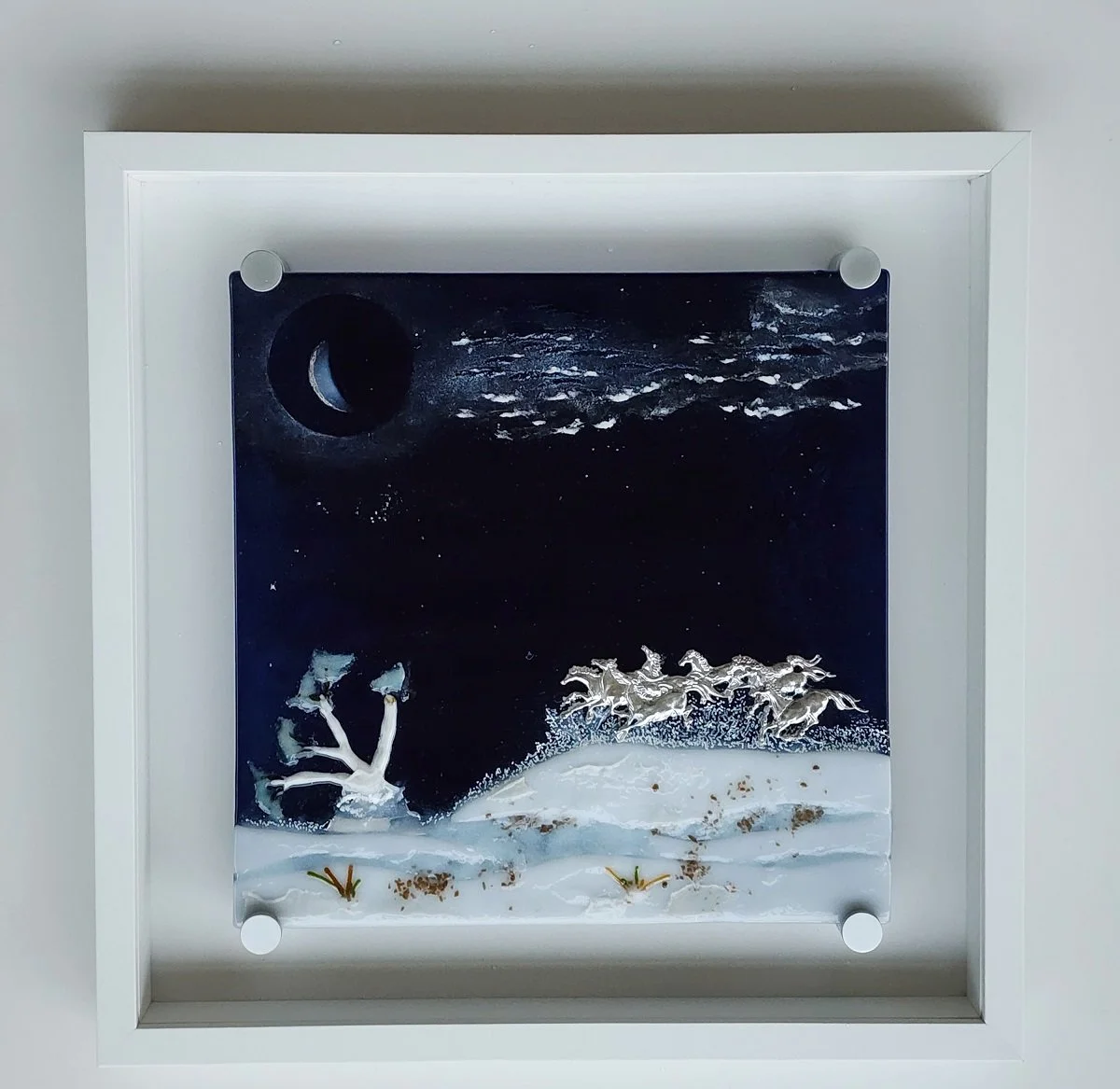Convergence/Divergence. The bane of visually seductive glassart is its propensity for unabashed, in-your-face beauty. Indeed, life as we experience it over decades, toggles aimlessly between gratifying utopia’s convergence and crushing dystopia’s divergence.
Domestic relationships fluctuate over time! Energetic altruistic first-love devolves into neutral self-centred indifference, then into downright alienation as decades pass. Such a time-honoured, entropic process spawns loss of cranial hair, sun-damaged skin, sullen distant gaze.
Being grounded on psychological stygian bleakness that observable spiral is unavoidable. Should life’s challenges range between black ’n white certainties, or between clear 'n clou’dy ambiguities? The latter methinks! Life lesson: not every cloud has a proverbial ‘silver lining’, nor rejuvenating rain.
Glassified EyeCandy’s commerciality diverges from unsaleable Glassified ‘ArtBrut’… metaphorical ‘poison-ivy’. This heavy-duty cast-glass three-piece sculpture straddles both paradigms…. material sun-kissed charisma battling covertly sinister domestic barbs. His ’n her head-profiles in curved bas-relief, bookended by socially-distanced 3D portraits.
Harvey Littleton kickstarted American university-centric Hot Glass Studio Movement in 1962 stating: “Glass can be a sculptural material!” and “Technique is cheap!”. Three USA-trained Glass maestros, Marquis, Boysen and Herman in 1974, dignified Aussie HGSM’s convergence. Marquis rebuked Littleton: “Technique is not so cheap!”. Skillitzi then responded: ”Glass: a mind-altering psychological material!”, and “Mixed-media and mixed-messages: worthy bedfellows!”.
Theoretically, would a total absence of us 1960’s ‘evangelistic’ glass pioneers have deprived the 2022 international scene of its current maturity? No!… given the post-WW2 ‘tsunami’ of idiosyncratic global talent swamping yesterday’s zeitgeist.
‘Pottery in Australia’ magazine, 1969 [Australia’s very first article featuring Contemporary Studio Glass], published Skillitzi’s comment: “… the analogy between musical composition and my ceramics [clay and/or glass]: I’m metaphorically harmonising violins and bass drums”. Pertinent convergent/divergent insight?!
glass.earth.fire@gmail.com
e: glass.earth.fire@gmail.com
w: artlogic.com.au
The work: CONVERGENCE/DIVERGENCE
50 x 100 x 100 cm: kiln-cast over carved plaster moulds [@ 950Cc] and kiln-bent over steel or ceramic forms [@ 700C], optical spectacle lens blanks [whole or crushed] . Three glass-only components: Total mass: 130 kgs.
Images: Stephen Skillitzi
The work is not for sale.

















